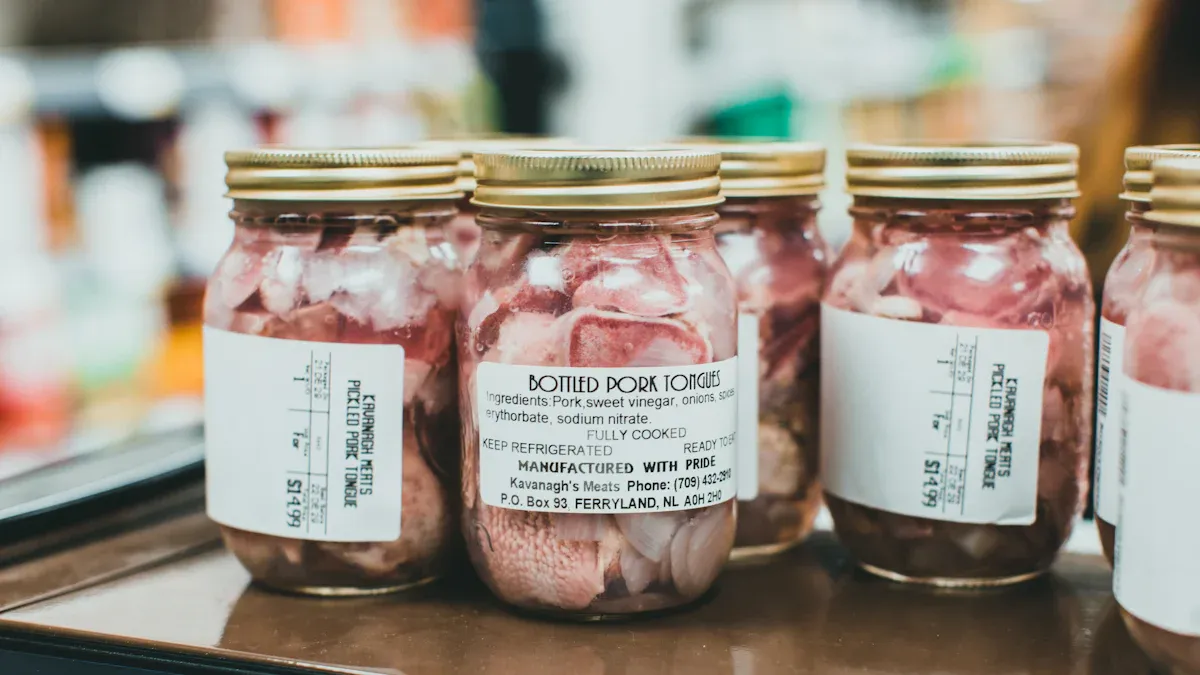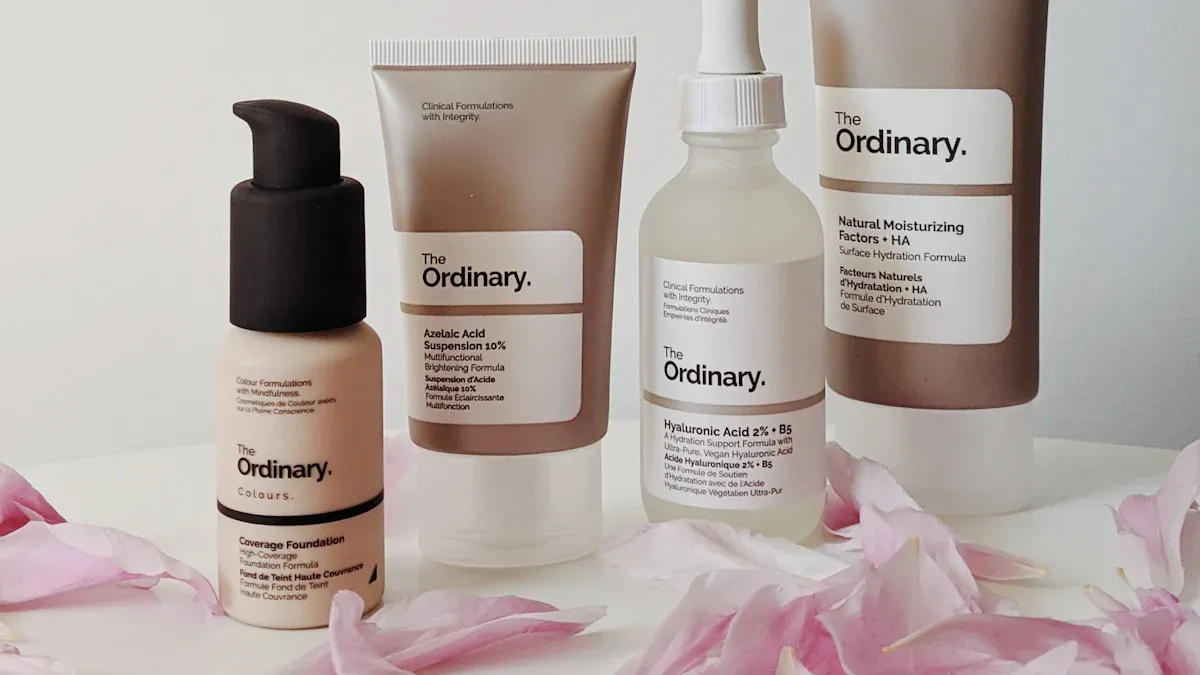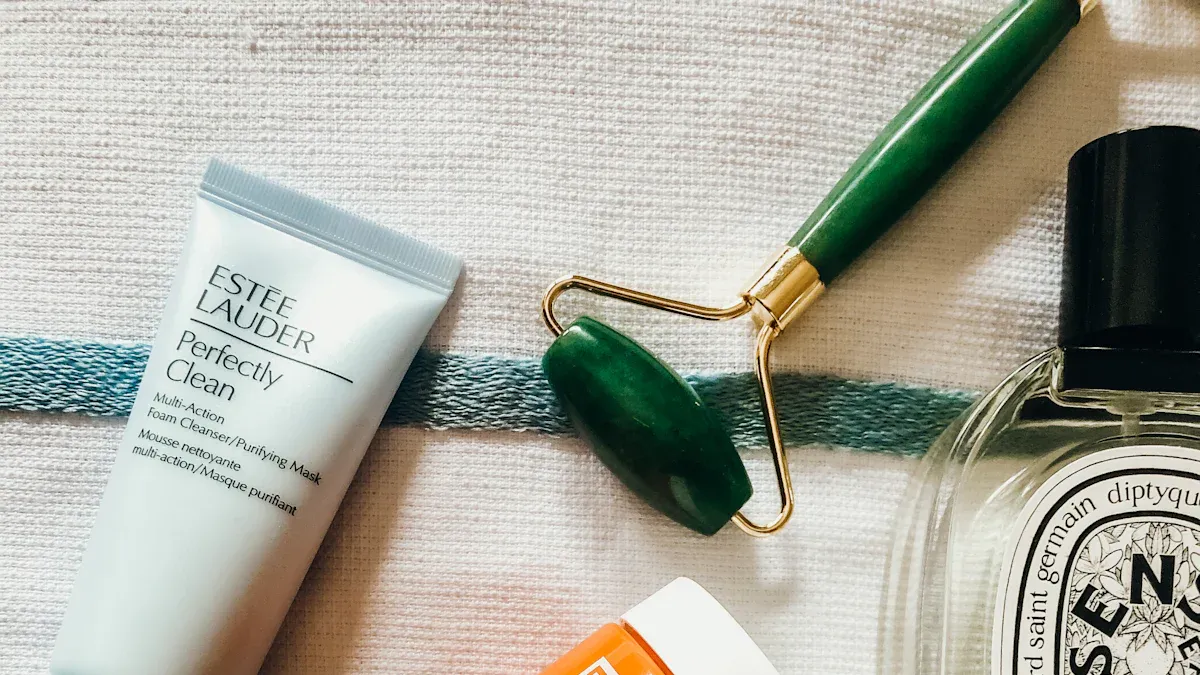You often see potassium sorbate on food or personal care labels. This compound is a food preservative. It helps stop mold and yeast from growing. Many companies use potassium sorbate because it works well. It also has a good safety record. You can find it in foods, drinks, and cosmetics. The global market for potassium sorbate keeps getting bigger. This is because it is used in food additives and other products.
|
Year/Region |
Market Value/Share |
|---|---|
|
USD 181.4 million |
|
|
2025 Market Size |
USD 188.3 million |
|
Largest Market |
North America (35.4%) |
|
Fastest Growth |
Asia Pacific (CAGR ~4.7-4.9%) |
People trust this preservative. Experts and food safety groups say it is safe to use everywhere.
Key Takeaways
-
Potassium sorbate is a safe preservative. It stops mold and yeast from growing. It works in foods and personal care products.
-
It helps keep foods fresh for longer. Foods like cheese, yogurt, and drinks stay good. It does not change their taste or smell.
-
Many products use this preservative. Cosmetics, shampoos, lotions, and pet food use it. It helps stop spoilage and keeps quality high.
-
Experts and food safety groups say potassium sorbate is safe. People trust it to make shelf life longer and protect health.
-
If you have sensitive skin or allergies, read product labels for potassium sorbate (E202). Test new products first to avoid irritation.
What Is Potassium Sorbate?
Basic Properties
You may ask what potassium sorbate is. This compound looks like a white powder. It mixes well with water, so it is easy to use. Many companies add potassium sorbate as a food grade preservative. You can find it in foods, drinks, and personal care items.
Potassium sorbate comes from sorbic acid. Sorbic acid is a natural compound in some berries. Scientists learned sorbic acid stops mold and yeast. They made potassium sorbate by mixing sorbic acid with potassium salt. This makes a stable and safe ingredient for many uses.
Here are some quick facts about potassium sorbate:
-
Chemical formula: C6H7KO2
-
Appearance: White, odorless powder or granules
-
Solubility: Highly soluble in water
-
Taste: Almost tasteless at low levels
Tip: If you see “E202” on a label, it means potassium sorbate.
How It Works
Potassium sorbate stops mold, yeast, and some bacteria from growing. When added to food or cosmetics, it keeps these microbes away. This helps your food stay fresh and safe longer.
As a food-grade preservative, potassium sorbate does not change taste, smell, or color. You can eat cheese, yogurt, and baked goods without worry. Many companies use potassium sorbate because it works well and is gentle. You can trust it to help keep food good and safe.
Main Uses of Potassium Sorbate

Potassium sorbate is important in your daily life. You can find it in your kitchen and bathroom. It is a food preservative and an antimicrobial agent. It helps keep things fresh and safe. Let’s see where potassium sorbate is used most.
In Food
Potassium sorbate is in many foods. It stops mold and yeast from growing. This helps your food last longer. Companies add it to cheese, yogurt, and baked goods. It is also in dried fruit and wine. You can find it in fruit drinks and soft drinks too.
Potassium sorbate works well even in small amounts. It does not change how your food tastes or smells. Many people like it because it keeps sodium low. It is a good and cheap food preservative. You can trust it to keep food safe from bacteria and mold.
Note: Potassium sorbate is often used to make food last longer. Natural options like vinegar or essential oils can work. But they might change how food tastes or feels. Potassium sorbate keeps food fresh without changing it.
In Personal Care
Potassium sorbate is also in personal care items. It stops mold and bacteria in things like cosmetics, shampoos, and lotions. This helps your products stay safe and last longer.
|
Preservative |
Dermocosmetic Products |
Supermarket Cosmetics |
Herbal Shop Cosmetics |
Topical Medications |
Household Cleaners |
|---|---|---|---|---|---|
|
Potassium Sorbate |
Very common |
Very common |
Very common |
Very common |
Very common |
|
Phenoxyethanol |
Very common |
Very common |
Very common |
Very common |
Very common |
|
Citric Acid |
Very common |
Very common |
Very common |
Very common |
Very common |
|
Sodium Benzoate |
Very common |
Very common |
Very common |
Very common |
Very common |
|
Parabens |
16.1% |
14.45% |
0.88% |
5.18% |
0% |
|
Isothiazolinones |
2.56% |
18% |
7.9% |
0% |
63.63% |
|
Formaldehyde releasers |
5.76% |
6.42% |
7.96% |
3.93% |
16.74% |
You can see potassium sorbate is used a lot in cosmetics and personal care. It helps keep your shampoo, face cream, and makeup safe.
In Other Products
Potassium sorbate is not just for food and personal care. It is also in pet food, topical medicines, and household cleaners. It acts as a preservative in these things. It stops mold and bacteria from growing. This helps the products last longer and stay safe for you and your pets.
You might also see potassium sorbate in food additives and supplements. It helps keep these things fresh and stable. As an antimicrobial agent, it protects against spoilage and keeps quality high.
Tip: If you look at labels, you might see potassium sorbate called E202. This means it is used as a preservative.
Potassium sorbate is popular because it works well and costs less. It does not change how products taste or feel. Natural preservatives can give a clean label, but they may not work as well. Potassium sorbate gives strong protection against spoilage.
Main Benefits of Potassium Sorbate

Shelf Life Extension
You want your food to stay fresh for a long time. One big benefit of potassium sorbate is that it helps food last longer. When companies add this preservative to cheese, yogurt, or baked goods, it slows down mold and fungi. This means you can eat these foods for weeks or months. Potassium sorbate stops bacteria and mold before they spoil your food. It does not change how your food tastes or feels. You do not have to worry about weird flavors or smells. Many companies use potassium sorbate because it keeps food fresh without adding more sodium.
Tip: To keep snacks or drinks fresh longer, check for potassium sorbate on the label.
Food Safety
You want to eat food that is safe. Potassium sorbate helps protect you from bad microbes. It blocks mold, yeast, and other fungi that spoil food. Some molds make mycotoxins, which can make you sick. Using potassium sorbate lowers the chance of mycotoxins in your food. This preservative is not very toxic, so it is safe to use. You also find it in pet food and supplements. This means your pets get safer food too.
Here is a table that shows how potassium sorbate helps with food safety:
|
Benefit |
How It Helps You |
|---|---|
|
Stops spoilage |
Prevents bacteria and mold growth |
|
Reduces mycotoxins |
Blocks fungi that make toxins |
|
Maintains freshness |
Keeps food safe to eat |
Product Stability
You want products that last and work well. Another big benefit of potassium sorbate is product stability. It keeps foods, drinks, and personal care items good for longer. When you use shampoo or lotion, potassium sorbate helps stop bacteria and mold. This means your products stay safe and work until you finish them. Potassium sorbate mixes well with water, so companies can use it in many things. You get products that stay fresh and do not spoil fast.
Note: Potassium sorbate works against many fungi and microbes. This makes it a great choice for keeping products stable.
Potassium Sorbate Safety
Regulatory Status
You might wonder if potassium sorbate is safe for you. Food safety experts have checked this preservative for a long time. The United States Food and Drug Administration (FDA) says potassium sorbate is “generally regarded as safe” in foods and drinks. The European Food Safety Authority (EFSA) and other groups also approve it. These groups make strict rules about how much can go in products.
Here is a table that shows how different regions regulate potassium sorbate:
|
Region |
Status |
Maximum Allowed Level |
|---|---|---|
|
USA |
Generally regarded as safe |
0.1% to 0.3% in foods |
|
Europe |
Approved (E202) |
0.2% to 0.3% in foods |
|
Australia/NZ |
Approved |
0.1% to 0.3% in foods |
|
Canada |
Approved |
0.1% to 0.3% in foods |
Note: You can trust products with potassium sorbate. Experts check its safety often.
Potential Risks
Most people use potassium sorbate with no problems. You might eat foods or use things with this preservative every day. Some people get mild side effects. You could see skin irritation if you use lots of cosmetics with potassium sorbate. Rarely, you might get an upset stomach after eating foods with it.
Scientists study how potassium sorbate affects gut bacteria. Most research says it does not hurt your gut health in normal amounts. Very high levels might cause problems, but you do not find these in regular foods or products.
Here are some possible side effects:
-
Skin redness or itching
-
Mild stomach upset
-
Rare allergic reactions
If you feel any discomfort after using products with potassium sorbate, talk to your doctor.
Managing Sensitivities
You might worry about being allergic to potassium sorbate. This allergy is rare, but some people get skin irritation or rashes. If you have sensitive skin, check labels before using new cosmetics or lotions. You can also test a small spot on your skin first.
Here are some tips for managing sensitivities:
-
Read ingredient lists on foods and personal care items.
-
Try a small amount of a new product first.
-
Ask your doctor if you have a history of allergies.
-
Choose products with fewer preservatives if you have sensitive skin.
Tip: Potassium sorbate is sometimes called E202 on labels. This helps you find it fast.
Most people can use products with potassium sorbate safely. If you have worries, talk to a healthcare professional. You can keep yourself and your family safe by staying informed and making smart choices.
You now know why many foods and personal care items stay fresh longer. This preservative helps protect your health and keeps products safe. You can find it in many things you use every day. Always check labels if you have concerns or allergies. If you feel unsure, ask a doctor or expert for advice. Making smart choices helps you and your family stay safe.
FAQ
Can you find potassium sorbate in organic foods?
You may see it in some organic foods. Many organic brands avoid synthetic preservatives. Always check the label if you want to avoid it.
Does potassium sorbate change the taste of food?
You will not notice a change in taste. Companies use small amounts. Your food keeps its flavor and texture.
Is potassium sorbate safe for pets?
You can find it in pet food. Experts say it is safe in approved amounts. Your pets stay healthy when you follow feeding guidelines.
What does E202 mean on a product label?
E202 is the code for potassium sorbate. You can spot it on food and cosmetic labels. This code helps you identify preservatives quickly.
Can you react to potassium sorbate in cosmetics?
Some people get mild skin irritation. You should test new products on a small area first. If you notice redness or itching, stop using the product.

